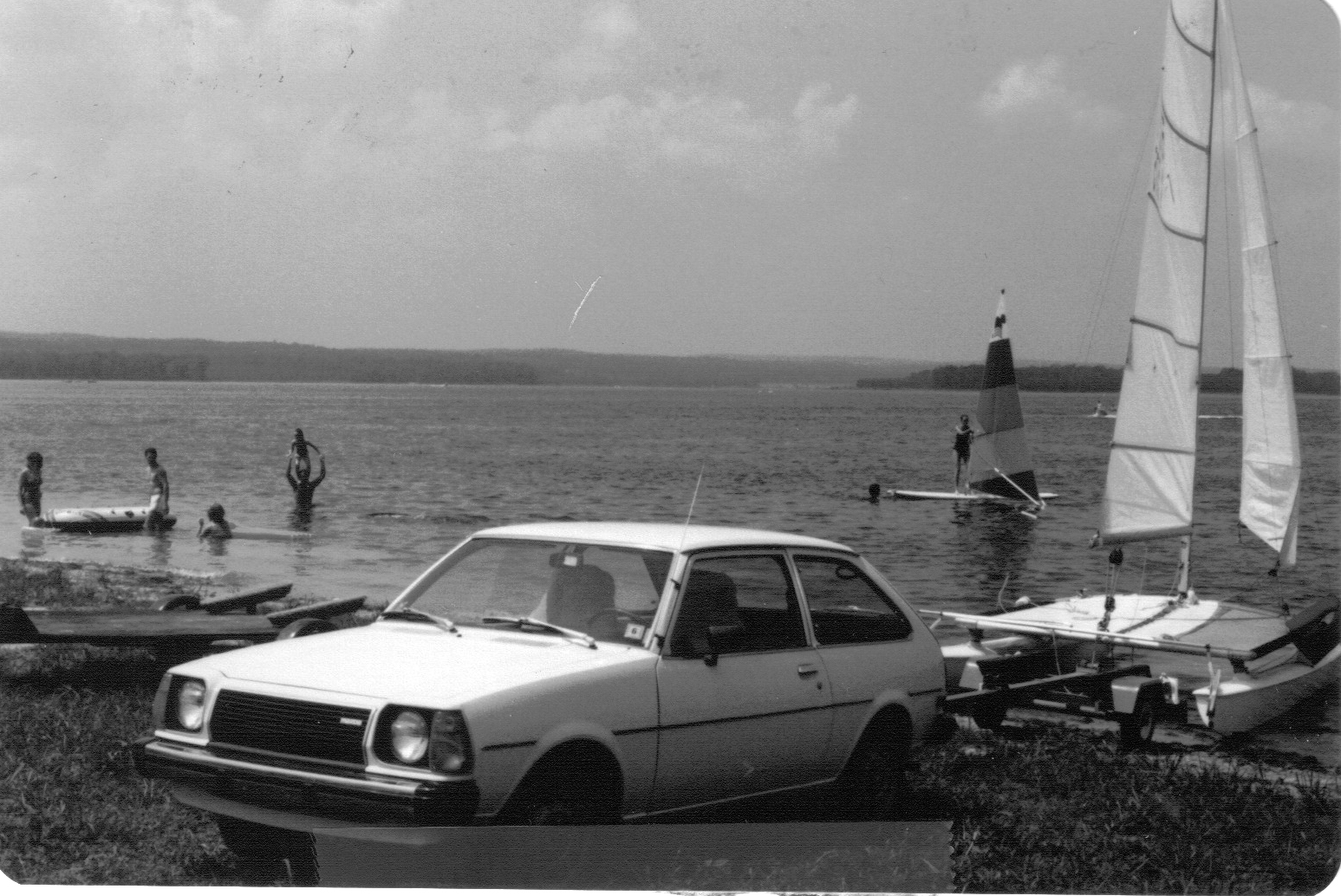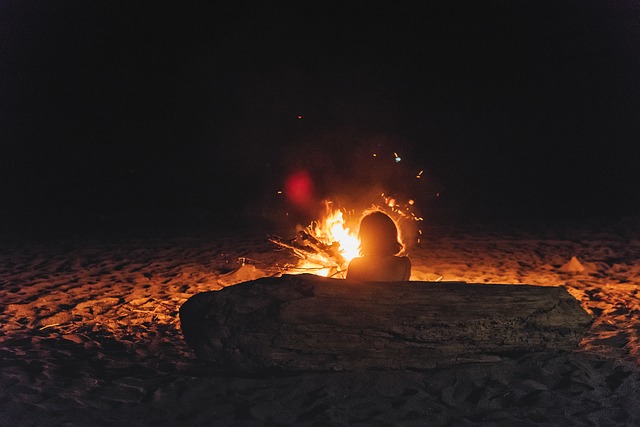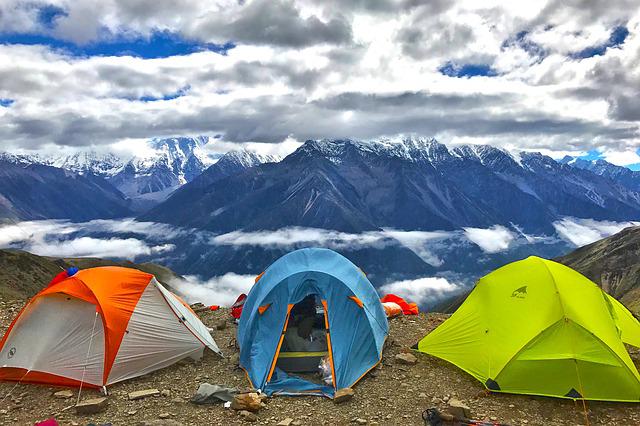
Camping in national parks is a great vacation idea, but there are important points to be aware of. Safety is the top concern. Large predators such as bears can pose a significant risk, so it is important to store food, supplies, and waste appropriately. To keep bear-resistant food containers in your car, trunk or vehicle, it is a smart idea. It's a good idea for these containers to be at least 15ft from the ground.
You must follow certain guidelines when camping in national parks. Yellowstone is an example of a national park where you need to treat your dogs with respect. Don't let your dog run free and don't allow them to pose a threat or danger to wildlife. To keep your dog from attracting unwanted attention from others, it is important that you pick up after them. Additionally, you should "leave none trace" and leave campsites in the same condition you found them.

Before you arrive at a national park campground, check if reservations are available. Some national parks allow reservations online, while others don't. You should always try to secure reservations before arriving, because you can be turned away if you don't have a reservation. To avoid issues with the first-come first-served system, it is a good idea to make reservations as soon as possible. Book at least one year in advance to ensure a smooth trip.
If you plan to camp in a national park, make sure that the campground has all the amenities. A designated campground may be available in the park or you may choose to camp in an area that is not developed. Dispersed camping in national parks can be challenging. In addition, national parks usually have more rules than other campgrounds. This is why it is important to read the regulations before you put up your tent.
Consider whether you would prefer to camp in a campground in the front or in a park in the backcountry during your trip. Some national parks cannot be reached by car, so it may take you a while to get there. You will also have to decide if you prefer a campground close to a restroom at the park or one in a more peaceful area. It is easier to find a campground close to a toilet than one far away.

Another thing to consider when selecting a campground are its amenities. Some parks provide electricity while others do not. The best national parks provide toilets. You need to ensure you are satisfied with the facilities. Aside from the convenience, camping in a national park is also a great way to spend quality time with your family. You'll also find a wide range of facilities in most national parks, making it easy to get around.
FAQ
Why does the U.S. Department of Agriculture (USDA) estimate that only about 1 percent of hunters kill a deer every year?
USDA estimates that 6.5 Million Americans hunt deer. Only 2.2 million shoot one.
This means that only 0.6 percent kill deer each year.
What types of guns can be legally used?
There are many different types of weapons you can use while hunting.
Hunters usually use rifles or shotguns or handguns as well muzzle-loading firearms.
Rifles can be used to fire long-range bullets. Shotguns are loaded with pellets. Handguns have the ability to fire bullets from the hand. Muzzle-loading firearms look similar to modern pistols.
Crossbows can shoot arrows. Bowhunters are also known for their archery weapons.
Hunting with a crossbow requires special training. First, you must learn how to aim and shoot the weapon correctly.
What training is necessary to become a hunter How long is it?
Basic courses are required in order to learn how you can hunt. This course will teach you about hunting and give you information about the laws.
You will learn how to properly handle firearms and ammunition. Instructions will also be provided on how to safely use these weapons.
This course can be completed in two weeks or three months. Online courses may be offered for some courses. Others are held in person.
Passing a written test is necessary to obtain a license. You may also need to show that you have completed a hunter education course.
What is the cost of getting licensed? What if I don't have enough money?
Costs for getting licensed vary depending on which state you are in. It ranges from $20 to over $100.
You may be eligible to receive a grant or loan if your income is not sufficient.
In addition to the fee, you will need to purchase a tag. Prices vary depending on which type of game is being hunted.
Tags are available to deer, elks and bears as well waterfowl, upland bird, and furbearers (like foxes).
You may need to register with the Department of Natural Resources in some states before you can get a license.
Before you begin hunting, check local regulations to ensure you are following all rules and requirements.
What should I know about hunting
You must be able to understand the movements of an animal, its habits, and how you can avoid being hurt in order to hunt effectively.
It is crucial to understand the hunting laws of your state. Certain types of hunting are allowed in some states, while others ban it entirely.
Weather conditions, terrain, as well as the weapon type are all important factors.
Consider whether hunting is something you want to do alone or with friends.
Hunting is an enjoyable activity for many people. Because it allows you to focus on your goal, this is a great advantage. Your shot might be missed if you are alone.
Hunting is a process that requires extensive preparation. Planning is essential to ensure you hunt in the right place.
Prepare your weapons as well. Before you leave, clean and inspect your guns to make sure they are in good condition.
You should always wear proper clothing when you are hunting. You should dress for the weather and terrain.
It is important to ensure that you have enough food and water. Also, be sure to have additional ammunition and supplies in case of emergency.
It is important to never leave anything behind. It could be damaged or lost.
If you're ready to hunt, it is important that you choose a location with no predators.
You must follow all the regulations set out by government. These regulations protect both wildlife, and humans.
What if I don't have a hunting license?
Yes, hunting is legal without a license. However, this could be considered a violation.
You could face jail or fines.
Some states allow residents to hunt without a license. For more information, contact your state department or natural resources.
Statistics
- Over the past 50 years, the number of hunting licenses in California has been on a rapid decline, falling 70% from more than 760,000 in the 1970s to under 268,000 in 2020—even as the state's population has skyrocketed, according to The Mercury News. (stacker.com)
- Thanks to the 1937 Pittman-Robertson Act, an 11% excise tax was placed on the sale of firearms, which were then used for conservation. (stacker.com)
- In less than 20 years, Rhode Island saw a 40% drop in the number of hunting licenses for residents, according to The Valley Breeze. (stacker.com)
- According to the Wildlife Restoration Act, passed in 1937, most of the state conservation efforts are funded through hunting and fishing license sales and firearms sales. (stacker.com)
External Links
How To
How to hunt wild Hogs
Wild hogs, which are large, can be found in North America and Asia as well as Europe. Wild hogs eat both vegetation and small animals, such as birds, fish, mice, rabbits and mice. They usually feed at night. The gestation period lasts around six months, after which one piglet is born. Every two years, a sow will give birth to a piglet. Wild hogs live alone, but sometimes they are part of a group called herds.
Wild boars typically weigh around 200 pounds (90kg). Their head length ranges between 10-12 inches (20-25 cm) and 20-30 inches (30-50 cm) respectively. Wild pigs have long legs with broad shoulders and short tails. Their skin is covered with a thick layer fat.
They are extremely sensitive to the senses of sight, hearing, smell, and taste. They use their senses to identify danger and find food. They can run up 35 miles per hour (56 km/h), as well as jump up to 15ft (4m) distances. They have sharp teeth. They are strong and aggressive in defense against predators.
Hunting wild hogs is hard because they are intelligent, fast, and elusive. Hunting wild hogs requires careful observation. Hunting too soon can cause the animal to escape. If hunters are too late, the animal might die before it reaches shelter.
There are many types of hunting methods used to kill wild hogs. The most common method of killing wild hogs is to shoot. This requires hunters to track down the animal and then wait until it comes into range. Another option is trapping. Trapping is the practice of placing traps in areas where the hogs are likely to drink. Many traps include a scent lure, such as corn meal and peanut butter. When the trap is opened, the hunter shoots a trapped pig.
Snaring, another method, is also an option. Snaring uses a noose made out of rope to catch the pig. The best time to catch a pig is during mating season.
Other methods include spearing, netting, and poisoning. For a pig to stop breathing, netting or spearing involves putting a net or spear around its neck. Poisoning can be done by injecting poison into the body of the pig.
Hunting wild hogs is a challenging sport. Hunters should be prepared for winter. To keep warm, some hunters use snowshoes. To help track animals, some hunters have dogs.